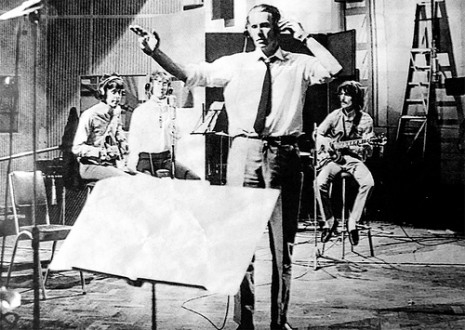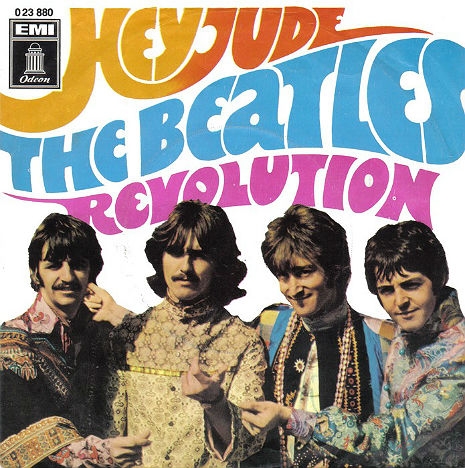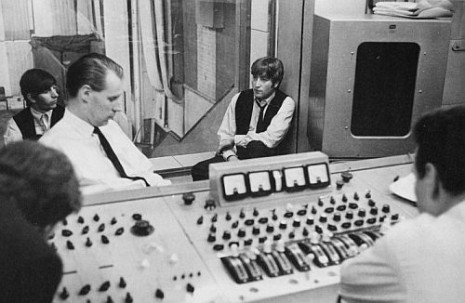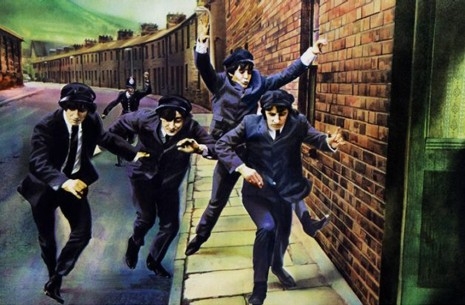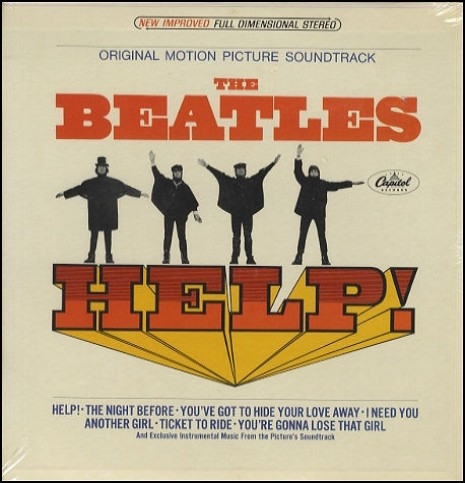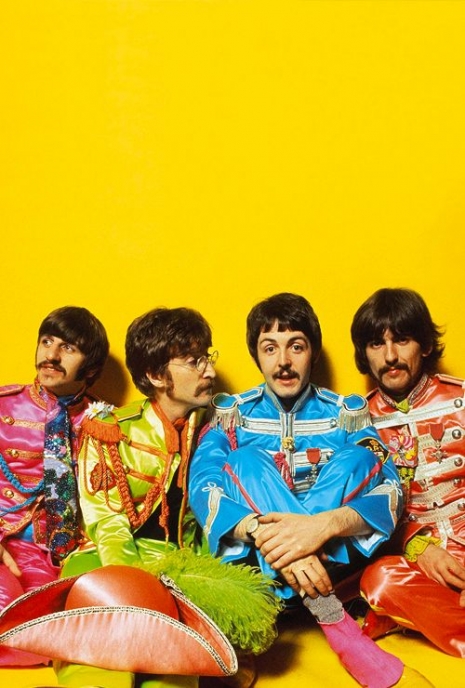
“It was 50 years ago today, that Sgt. Pepper taught the band to play…”
Whenever I write a “review” of something that’s universally acknowledged to be a masterpiece, I usually try to go out of my way to explain to the reader that just as I don’t care what their opinion is of [fill in the blank with names like Neil Young, Pink Floyd, David Bowie, etc.] I really don’t expect them to give a fuck what I think of [fill in the blank again] either. You don’t think Tonight’s the Night is such a great album? Can’t get into Meddle? Love Court and Spark but Uncle Meat never did it for you?
Who gives a shit, asshole? Not me, not anyone. Taste is subjective but certain great artists are beyond “opinion.” The Beatles top that list. I’m not about to volunteer my opinions on the music contained on the new 50th-anniversary box set of Sgt. Pepper’s Lonely Hearts Club Band but rather try to answer questions regarding its consumer value like: “Did they do a good job with it?” and “Is it worth a pricey upgrade for your music library?” On matters of this sort, I am happy to be of service.
Now… having said all that, Sgt. Pepper’s Lonely Hearts Club Band has really never been one of my favorite Beatles albums. I’ve owned it since I was a little kid, and although I had most certainly played it enough back then to have every bit of it memorized and etched into my DNA, I honestly don’t think I’ve purposefully pulled out Sgt. Pepper’s and played it more than once (when the remastered Beatles CDs came out in 2009) since the early 80s. It’s just not got a single one of my favorite Beatles’ tracks—I far prefer what was released on either side of it. I mention my “opinion” here in passing only to explain what I felt like going in...
When the package arrived last week containing the six-disc deluxe edition, I assumed, due to the HEFT of the thing that I had just gotten a care package with about 25 albums in it from one of the labels. Nope, just one BIG box set and one that’s very heavy. The slipcase is a spectacular and eye-popping re-rendering of the famous “people we like” artwork by Peter Blake and Jann Haworth in the form of a glued-on 12” by 12” 3-D lenticular. It’s seriously cool and positively shouts “first class” and signals “archival edition” from the very start.
You slide that off to find a replica of the box containing the master tapes. Open that and there’s a high gloss recreation of the original album jacket which houses six discs—4 CDs (new stereo mix, outtakes, 1967 mono mix, element reels), one Blu-ray with a 5.1 surround mix done by Giles Martin (and some video material) and one regular DVD with the same material in lower resolution. There’s also a really good 144-page hardback book with fascinating essays, as well as nicely printed recreations of a full-color vintage UK in-store marketing poster for the album, the original “cut outs” insert and—and this is ABSOLUTELY SWELL—the Victorian-era circus poster that inspired John Lennon to write “Being for the Benefit of Mr. Kite.” Don’t tell me that’s not an inspired inclusion! It’s also something completely essential to a better understanding of the music and there for a reason (unlike the fucking marbles that came with The Dark Side of the Moon box set. MARBLES!) Many will already know the backstory, but if you don’t, and even if you do, having that poster in front of you as you contemplate the creation of that song as it’s playing is positively delightful in every way. And that sort of attention to detail is yet another reason why this box set is a cut above so many others.

The main events here, of course, are the newly minted stereo and 5.1 surround mixes by Giles Martin. Both are absolutely incredible. If you don’t already have a 5.1 listening situation in your home, now might be the time to upgrade. Seriously. Hearing Sgt. Pepper’s in surround offers sonic revelation upon sonic revelation and is a deeply satisfying audiophile listening experience. Sgt. Pepper’s has always been a particularly good-sounding album, after all it was recorded in one of the very best studios in the world by perhaps the greatest record producer who has ever lived—but in this enhanced state, with the playback given room to breathe via five speakers and a subwoofer, it’s a different beast altogether from what we’re used to hearing. The music—which employs one of the most original and varied palettes of rainbow-colored sounds ever devised—is sharper, crisper, tighter, more alive sounding, etc., etc. than I’d have ever thought possible.
At the time of the original recording, limited by how many tracks were available (four), the Beatles and George Martin would build source reels of overdubs and sound effects and then these element reels would be “bounced down” ultimately to the two-track stereo master or the mono mix. With analog audio tape, each layer or generation introduces an additional level of tape hiss. Add too many and it starts to sound murky.
Giles Martin and his team went back to these four track element reels and reassembled Sgt. Pepper’s from these earlier generation tapes, which had been kept in the EMI vaults. The results, whether the new stereo mix or the surround treatment, are remarkable. From the opening moments of the audience anticipating the start of a rock concert, you just know that you are about to experience something amazing—what audiophiles call an “eargasm.” It made the hairs stand up on the back of my neck as if I was really there standing among the audience—or in Abbey Road studios—waiting for the show to begin. Red lights, green lights, strawberry wine, if you know what I mean. And then BOOM it’s on. The title track rocks like a motherfucker.
As the story goes, it took the Beatles and George Martin three weeks to mix the mono version of the album, but after that, the band left and Martin mixed the stereo version alone in just three days. In 1967, stereo was still seen to be as much of a gimmick as 5.1 surround would be today. Most people owned a “record player” at the time with but a single speaker (and a carrying handle). George Harrison once described how the Beatles felt about hearing their music in stereo vs. mono: the stereo versions always sounded like “less” to them. By 1968 mono was already quickly being phased out and the stereo Sgt. Pepper’s became the default version. Most people have never even heard the mono version and although until now most of us haven’t had anything to compare it to, retroactively the “classic” stereo version seems much weaker than the more worked-over and considered mono mix. McCartney’s bass was much less focused and punchy; the same can be said for Ringo’s drums. What we are used to hearing is flatter and doesn’t necessarily feel like all of the musicians were playing together at the same time. The new stereo version corrects these deficiencies for 21st century sonic expectations and modern audio systems. Macca’s bass contributions are nimble, better-defined, more muscular and rubbery. Ringo’s kick drum thuds and his snare cracks without worry that the needle will jump out of the record’s grooves. There’s significant detail in the high end for the cymbals and hi-hats. The bottom end is never flabby or muddled, but now the rhythm section will vibrate the foundation of your house.
With the new 5.1 mix the soundstage is opened even wider, and although Martin’s mixes (both the new stereo and the 5.1 mix) have a respectful fealty to the original 1967 mono mix done by his father and the Fabs, here the listener is able to detect individual Beatle voices amidst densely layered harmonies and see even deeper into creation of the music. Sound effects, like the swirling circus sounds in “Being for the Benefit of Mr. Kite” are particularly three-dimensional. The sitars and tablas of “Within You, Without You” felt like psychedelic leaves falling around me, but no one can accuse Giles Martin of doing anything other than what should have been done. No more, but no less either. If you were hoping for something showier than the conservative 5.1 mixes on 2015’s Beatles #1 video set, Martin’s sparkling new Sgt. Pepper’s surround mixes do go a bit further out, but by and large expect immersion, not gimmickry. There’s still quite a bit of difference between music coming at you from two speakers vs. standing right in the middle of it in a concert hall. You can’t please everyone, but I feel like Martin hit the absolute sweetest spot here. Even the overly opinionated ponytailed baby boomer guy at the record store won’t be likely to cry “sacrilege” at this one.
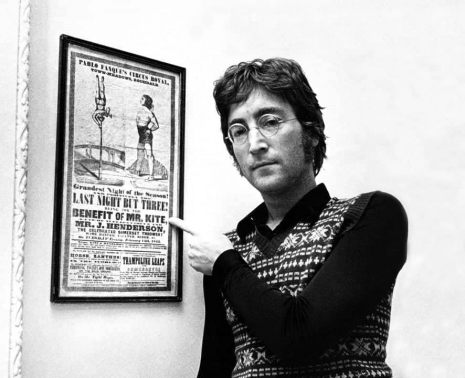
Someone I know who also scored a review copy said that this new edition of Sgt. Pepper’s was like going from VHS to 4K. Whereas I appreciate the point he was trying to make, let me remind you that Sgt. Pepper’s has never sounded bad! However, I would say that comparison holds up if he’d have said it’s akin to going from watching a DVD on a standard def TV circa 1999 to a SONY 4K OLED flatscreen today (have you seen this?) with a full complement of speakers and a subwoofer pumping out 5.1 surround. That’s still saying a hell of a lot.
More after the jump…







